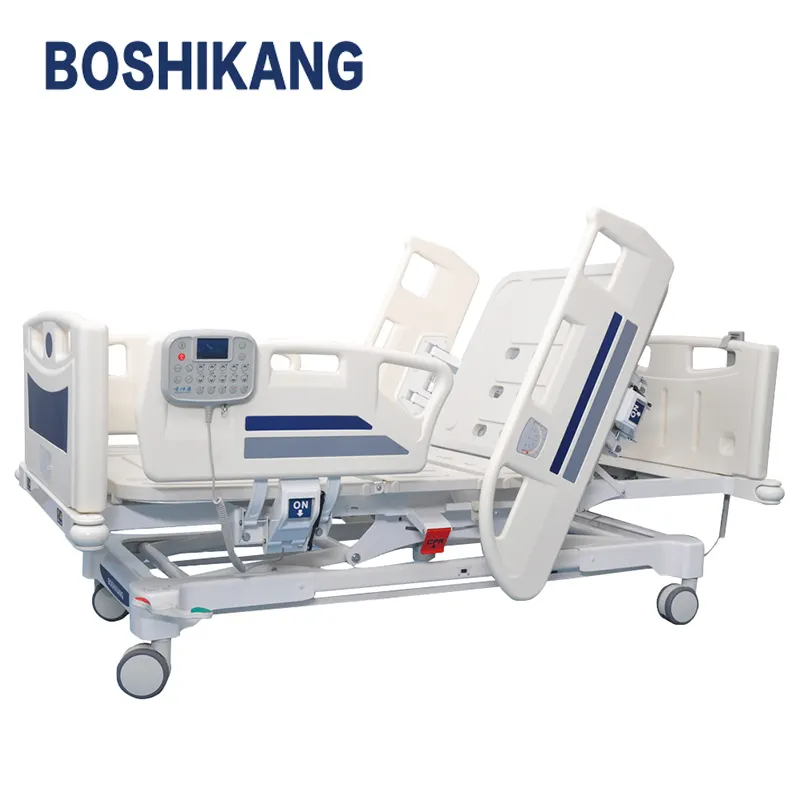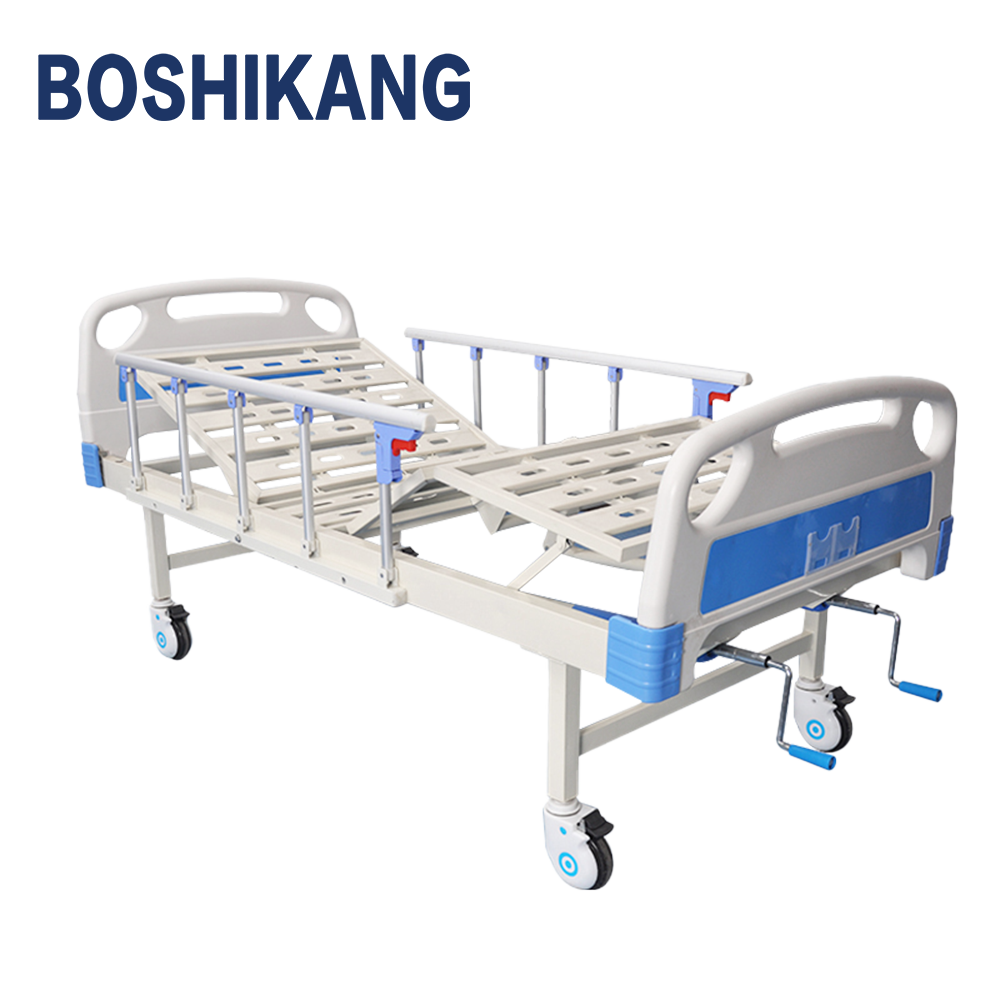Importance of selecting the right hospital bed
Picking out the right hospital bed makes a big difference for both patient comfort and how efficiently caregivers work, particularly in places where people stay for extended periods. A good quality bed really helps reduce the problems that come up for everyone involved. Patients don't have to struggle with getting in and out, and nurses spend less time adjusting things manually. Take electric hospital beds for instance these models come loaded with features that make life easier for those who need them most. They allow height adjustments, pressure relief settings, and even some models can tilt to help with positioning during treatments or rest periods.
Choosing the right hospital bed makes a big difference in preventing problems like pressure sores and helping patients get better faster. Take adjustable beds for example they really cut down on those painful pressure ulcers that often plague people staying in care facilities for extended periods. These beds aren't just about comfort either. They actually allow healthcare providers to position patients properly for treatment and daily routines, which speeds up healing time considerably. When medical facilities invest in this kind of specialized equipment, both hospital wards and home care environments see noticeable improvements in patient satisfaction and clinical results over time.
Key Features to Consider
Selecting a hospital bed equipped with the right features is paramount for ensuring patient comfort and care quality. From adjustability and weight capacity to safety mechanisms, each feature should be thoughtfully evaluated to meet the unique needs of patients.
Adjustability & Positioning – Multiple functions for comfort and mobility.
Adjustable hospital beds really make a difference when it comes to comfort and getting around. The best ones let patients change the height and angle of the backrest according to their needs. This helps people move on their own while making life easier for nurses and other staff members who have to help them regularly. Some models even come with special settings called Trendelenburg and reverse Trendelenburg which tilt the bed forward or backward. These positions actually help blood flow better and support breathing, so they're pretty important for recovery. For anyone spending time in a hospital bed, being able to adjust things makes all the difference. And from what healthcare workers tell me, these adjustable features save them tons of time during rounds, particularly with patients who need to be moved several times throughout the day.
Weight Capacity & Durability – Ensuring stability and long-term use.
When buying a hospital bed, weight capacity and how long it lasts should be at the top of anyone's list. Beds built to handle heavier loads and made from good quality materials will stand up to daily use no matter what size or weight the person using them might be. Look for models constructed well enough so they don't break down easily, which means better stability for whoever lies on them. Strong construction keeps patients safe while cutting down on those annoying repair calls that cost extra money in the long run. For facilities wanting something that won't need replacing every few months, checking specs about maximum weight ratings and material thickness makes sense. Some manufacturers even publish test results showing how their beds hold up under stress conditions similar to actual hospital environments.
Mattress Compatibility – Pressure-relief options for preventing bedsores.
When hospital beds work well with special mattresses, it really makes a difference for patients, particularly when it comes to avoiding those painful bedsores. Beds designed to fit pressure relief mattresses offer better support where needed most and generally feel more comfortable overall. This helps cut down on the risk of sores forming after someone has been lying in one position too long. Take air mattresses for instance they actually change pressure points based on what each individual needs, which means folks get both comfort during their stay and faster recovery times. Adding these kinds of mattresses into standard equipment isn't just about making things more comfortable it literally changes how well patients heal while they're recovering at the facility.
Side Rails & Safety Features – Preventing falls and enhancing security.
When talking about hospital beds, safety just cant be compromised. Side rails really matter because they stop people from falling out, particularly when someone is trying to get in or out of bed. Hospital beds that come with built-in side rails give both patients and their caretakers a sense of security. Some models even have extra safety stuff like locks that prevent the bed from moving around and alarms that go off if someone tries to climb over the rail. All these safety additions help accommodate different levels of mobility while keeping risks low. That's why most healthcare facilities consider these safety elements essential parts of their equipment, even though budget constraints sometimes make it hard to outfit every single bed properly.

Ease of Use for Caregivers
The remote controls on hospital beds really matter for making life easier for caregivers while keeping things running smoothly for patients. These controls need to be straightforward to use from across the room so staff can make adjustments fast without messing around too much. When nurses and attendants can tweak bed positions without breaking stride, their whole workflow gets better and they don't get as tired lifting patients manually all day long. Most modern hospital beds come with manual overrides too just in case there's ever a power outage situation. This backup system works whether the bed runs completely on electricity or has some manual components mixed in. Hospitals know how important it is to keep those beds working through any kind of emergency or unexpected problem, which means patients stay comfortable even during tough situations.
Maintenance & Cost Considerations
Getting the right balance between quality and money matters a lot when someone wants to buy a hospital bed for home use. The sticker price definitely catches attention first, but looking at what happens down the road matters even more. Those cheaper options look tempting at first glance, yet they often come with surprises later on as parts break down and need fixing again and again. On the flip side, spending extra bucks on a better made hospital bed usually pays off in the end since there aren't so many unexpected repair bills hanging around. People should really think beyond just how much cash changes hands at the register and instead focus on all those hidden costs that pop up after bringing the bed home.
Conclusion – Choosing the best electric hospital bed for patient comfort and caregiver efficiency
Picking out the right electric hospital bed really makes a difference for both patients and those taking care of them, so there are quite a few things worth thinking about before making a choice. When looking at options, it's essential to check what the patient actually needs versus what the caregivers require day to day. Take adjustable beds for example they let patients move around more on their own which takes some strain off nurses and family members who help with daily tasks. Safety matters too, so look for models with sturdy side rails that stay put when needed, plus alarm systems that notify staff if someone tries to get up unassisted. These little details might seem small but they can prevent accidents and make everyone's life easier in the long run.
A good electric hospital bed needs to satisfy both patients wanting comfort and caregivers needing practicality. These beds must meet basic medical standards while also adjusting to different situations patients find themselves in, whether they need help moving around or just want something softer to lie on. While fully electric versions do come at a higher price tag, they generally provide better options for people who value independence and make life easier for those taking care of them. When hospitals take time to pick out the proper equipment instead of going for whatever's cheapest, everyone involved tends to have a much better experience during treatment and recovery periods.
FAQ
What features should I look for in a hospital bed for long-term care?
For long-term care, important hospital bed features include adjustability for height and position, weight capacity for stability, mattress compatibility to prevent bedsores, side rails for safety, and remote controls for ease of use.
How can hospital bed adjustability benefit patients?
Adjustability in a hospital bed can improve patient comfort and mobility, promote better circulation and respiratory function, and assist caregivers by facilitating patient repositioning.
Why is weight capacity an important consideration?
Weight capacity ensures the stability and durability of the hospital bed over time, preventing breakdowns and providing reliable support to patients of varying sizes and weights.
How does a specialized mattress help in patient care?
A compatible specialized mattress, such as a pressure-relief mattress, can enhance comfort and support, helping prevent bedsores and promoting healing.
Are side rails necessary for hospital beds?
Side rails are essential for patient safety as they prevent falls and provide added security, especially for patients who move during sleep or need assistance getting in and out of bed.


